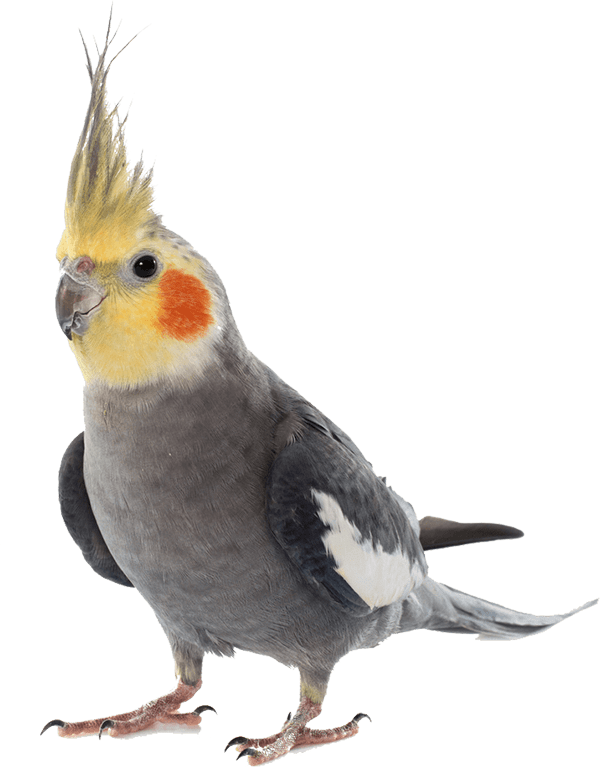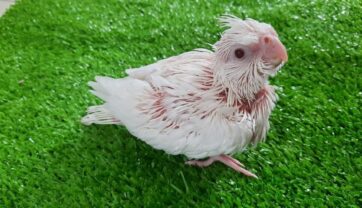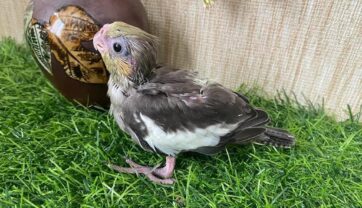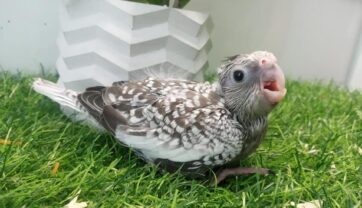Breeding Cockatiel
Cockatiel lovers are all too familiar with the endearing nature of these companion birds. Also known as quarrion, these Australian birds can typically live between 15-25 years on average. But what if you’re interested in expanding your cockatiel family at home? Have you ever considered breeding these beautiful birds?
If so, you’ll delight in the fact that breeding cockatiel birds is actually quite easy, although getting started does require some knowledge and commitment. In this article, we’ll explain the steps you need to take to properly breed and care for bred cockatiels.
Read on to learn more about expanding your family of these small, household parrots that make excellent pets.

Requirements for Breeder Cockatiels
The first thing you should do when considering whether or not to breed your cockatiels is to make sure they are fit for breeding. It seems obvious enough, but many people neglect this step, and it has unfortunate outcomes for both you and your birds. Here are the requirements your cockatiels must meet before you can breed them.
Excellent Physical Health and Condition
Anytime you practice breeding, ensuring the health of the parents is a must. This is to prevent passing on genetic health issues to the offspring and to prevent complications during the breeding process. Signs that a cockatiel is not fit for breeding include:
- Obesity
- Underweight
- Eyes that aren’t clear
- Dirty or rough plumage
One serious factor is the cockatiel’s weight. Especially in female cockatiels, obesity can lead to egg binding (the female cannot expel the egg, leading to serious illness). Being underweight can also negatively affect gestation since it could be a sign of disease.
You should also check for any birth defects, illnesses, and disease in both the male and female. Common cockatiel conditions to check for before breeding include respiratory diseases caused by bacteria (leads to enlarged liver and respiratory weakness), GI yeast infections, oviduct prolapse (females), and reproductive tumors. A visit to the veterinarian can help you confirm that the cockatiels are healthy enough to breed.
Unrelated Birds
Breeding cockatiel birds is similar to breeding other animals in the sense that it’s not healthy or ethical to breed related birds. Breeding animals that are genetically related leads to genetic defects in the offspring. The baby cockatiels could end up deformed, sickly, or worse.
Therefore, if your cockatiels are a sibling pair from the same parent cockatiels, you should definitely count them out of the running. If you aren’t sure whether or not your cockatiels share a relation, you should get them tested by a veterinarian to be sure.
Age Minimum
Cockatiels, both male and female, should ideally be between 15 and 24 months old to be ready for breeding. This is the age of sexual maturity; breeding them younger than this can lead to complications.
Starting the Breeding Process
Once you have established your breeding cockatiels (the parents), you can take the first steps toward actually breeding them.
Make the Breeding Nest
You’ll require a proper home for your breeding cockatiel. You should confine them to their own cage, with no other birds in the mix. Make sure the cage is of a decent size and a nesting box that’s at least one square foot large. Supply the cage and nest with fresh paper shreds, shavings, and feathers. Make sure to clean the cage regularly.
Supply Food and Water
When it comes to proper nutrition during breeding, your cockatiels should have a healthy variety of food at their disposal every day. You’ll want to ensure they are well-fed, as being underweight can upset the breeding process and lead to health issues.
Fresh produce (fruit and vegetables), seed, and pellets are necessary. You’ll also need to supply plenty of fresh water daily. Add a calcium supplement to their diets for the sake of the eggs.
Egg Laying and Hatching
When breeding cockatiel, watching the breeders lay their eggs and waiting for them to hatch is perhaps the most exciting part! Cockatiel owners love watching the incubation process and seeing the chicks come to fruition. There are a couple of steps involved here.
Laying the Eggs
Once your cockatiels have successfully mated, you can expect the female to lay eggs in about three weeks. Large droppings/stool are a sign that the female is about to lay eggs soon. The eggs may come all at once, or they may come over the span of several days, so be patient. You can expect about 4-6 eggs, on average.
Incubation
Monitoring the incubation of the eggs is a delicate process and requires care. What’s cool about cockatiel incubation is that both the male and the female breeders will take a share in incubating the eggs.
This is why it’s good to keep the nest in the cage and give your breeders free range to get in and out of it. Check on the nest several times a day, but be gentle and always announce your visit so as to not startle the birds.
Hatching
Hatching will start within about 20 days, give or take a few days. You should also carefully monitor the hatching process to ensure all eggs have hatched. You’ll also want to prepare the parents by feeding them soft food, which they’ll begin feeding their young. Expect a lot of growth in the first 10 days of the chicks’ lives.
Weaning
If you choose to wean your cockatiel babies off of the parents, you can start around two weeks of age. You’ll need a brooder to hand-feed the chicks until they reach about seven weeks, at which point you can fully wean them.

Conclusion
Breeding cockatiel birds is easier than most people think. However, you should only breed these pet birds under the most healthy and safe of circumstances. The entire breeding process takes about a few months, whereas eggs take about three weeks to fully hatch.
Cockatiels are beautiful companion birds that make wonderful additions to bird-loving homes. If you want to get started breeding cockatiel birds, be sure to follow the above steps and consult with a veterinarian if you have any doubts.
Latest Articles

The Dominant Silver Cockatiel
The Dominant Silver Cockatiel The dominant silver cockatiel is one of the most popular breeds. There are many reasons for…

The Albino Cockatiel Price
The Albino Cockatiel Price The albino cockatiel is a breed of pet bird that comes in many colors and patterns.…

The Fallow Cockatiel
The Fallow Cockatiel Fallow cockatiel are small bird which is commonly found in Australia. They are also found in Indonesia and…

Pearl Pied Cockatiel
Pearl Pied Cockatiel There’s nothing like having a small bird as a pet, especially if it’s a cockatiel. Not only…

Normal Grey Cockatiel
Normal Grey Cockatiel Cockatiels are one of the most common pet birds and one of the easier pet birds to…

Cinnamon Pied Cockatiel
Cinnamon Pied Cockatiel You’ve probably seen cockatiels in pet stores and heard about them, but you’ve likely never seen or…